The Bedfordshire Regiment in the Great War

Officers who died serving in the 5th Battalion
This roll of honour is in chronological order of the date the Officer in question died and many can be seen in the group photographs here. .
Gallipoli, 1915
The first 6 Officers were all killed during the attack on Kidney Hill, which lies along the Kiretch Tepe Sirt in the Suvla Bay area of the Gallipoli peninsular on the 15th August 1915, of which a detailed story can be found here.
|
Captain Charles Tanquerary BAKER Killed in action 15th August 1915. Aged 23
He joined the 5th Battalion as a Second Lieutenant on 25 October 1912, was promoted to Lieutenant immediately after the baattalion was embodied for service in August 1914 and to Captain on 5 September 1914. He can be seen in the Officers 1915 group photo (second from the left, third row) and with his Company in 1915 on the same page. His father was the 5th Battalion's Chaplain, his attempts to move overseas and stay with the battalion when deployed being blocked by his Bishop. Captain Baker commanded B Company during the attack on 15th August. The Regimental History records that "… although wounded, (he) went on at the head of his company until he fell." His first wound was in fact, a shattered arm caused by an artillery shell. The second wound, from a rifle bullet, was received whilst he was being led back to the Regimental Aid Post and was fatal. The battalion commanding office, Lieutenant-Colonel Brighten, wrote home that he "led his Company superbly". Captain Baker is buried at Azmak Cemetery, Suvla - a photograph of his gravestone can be seen here. |
|
Captain Brian Clark CUMBERLAND Killed in action 15th August 1915, aged 26.
After initially receiving private education, he went to Dunstable Grammar School. At the end of his Grammar education he went to spend a year with a farmer in Roxton as his health was 'delicate' and the knowledge gained there was used when he moved into his family's Auctioneer and Surveyor business in 1910. Brian was initiated into the St John the Baptists Freemason Lodge in 1911, was a member of the Conservative Club and was noted as being an excellent tennis player, as well as several other sports. He was gazetted as a Second Lieutenant in the 5th Battalion on 6 December 1911 , promoted to Lieutenant on 2 May 1913 and to Captain when the battalion reorganised itself on 29 August 1914. He can be seen in the 1915 Officers photograph here and in person below. During the attack on 15th August 1915 Captain Cumberland was the Commandng Officer of A Company (in the leading line of the assault) and described as a "superb leader" by his battalion C.O. He "called on his company for the last charge up the crest (towards Kidney Hill itself), and in the act of waving them was shot through the head". Private Scott of his company wrote home how, as the mile-long advance developed "The Captain was getting quite excited and called out 'Come on boys, we've got 'em', when he fell down ... I went to Captain Cumberland but could see it was quite hopeless. He had a serious wound in the back of his head and it was impossible to get him back to the hospital. Good heavens, I shall never forget it as long as I live." Sergeant 2911 David Buckingham from his company added "Well, we were getting on very well when our captain got hit. He was a great officer. He was like a brother to all of the N.C.O.'s in our company and I for one was very sorry to see him get knocked over. All the way up from the base he was the first to see what was in front before he sent his men out. If there was any dnger, he was there first. There was no slacking with him. We went out the first night we got there to dig trenches and there was a sniper who was giving us some trouble. The captain aked for a rifle and he had one shot at the tree that was about 200 yards in front of us. We were not troubled by the sniper again." Captain Cumberland lies in the Azmak cemetery, Suvla, Gallipoli - a photograph of his gravestone cna be seen here. |
|
Captain Walter Kendrick MEAKIN Killed in action 15th August 1915.
He was gazetted as a Second Lieutenant into the 2nd Volunteer Battalion of the North Staffordshire Regiment on 5 April 1905, gaining his Lieutenantcy from 1 April 1908. He become a Captain from 10 May 1912 and would have transferred to the Bedfordshire Regiment's 5th Territorial Battalion around that time, given that he was living in Bedford by the 1911 census. In August 1914 Captain Meakin was in command of H Company (Bedford). When the battalions companies were reorganised from eight to four for active serice, Walter was left in command of the new 'double strength' C Company. He was instrumental in helping to shape the Battalion during their training, sailed with them for Gallipoli in July 1915 and led C Company during their first battle on the 15th August 1915. Captain Meakin was killed during the main charge against the second Turkish positions. The eyewitness that saw him falling was himself killed, so his body was never recovered from amongst the broken ground of Gallipoli. As a result, he is remembered on the Helles Memorial, Gallipoli. All of C Company's officers were lost in the attack, leaving their Sergeant Major in command despite his own wounds. Walter can be seen in the group photograph here. (Image courtesy of the Imperial War Museum, reference HU 125525) 5/4/1905 2Lt 2 Vol Bn N.Staffs (LG). 1/4/1908 Appointed Lt from 2nd Vol Bn P.O.W. N.Staffs [during change to TF?] (LG). 10/5/1912 Captain N.Staffs (Army Lists). 16/5/1914 Capt 5th Beds, from 6th P.O.W. N.Staffs (LG). |
|
Lieutenant Cyril Richard LYDEKKER Killed in action 15th August 1915, aged 25.
His father was a "noted traveller and scientist" who had died only months before Cyril's death, leaving five children. Cyril was gazetted a Second Lieutenant in the 5th Battalion on the 14th March 1914 and promoted to Lieutenant on 22 August 1914. Lieutenant Lydekker was killed on the 15th August 1915 during the second phase of the assault against Kidney Hill itself. His body was recovered so he lies in the Azmak Cemetery, Suvla - a photograph of his gravestone can be seen here. Cyril was the son of the late Richard Lydekker, F.R.S. and Lucy Marianne Lydekker, of Harpenden Lodge, Harpenden, Herts. His elder brother, Hon. Lieutenant and Quarternaster Gerard Lydekker died on the 14th June 1917, also in the 5th Battalion. |
|
Second Lieutenant Ralph Dalton Jarvis BRIGHTEN Killed in action 15th August 1915, aged 22.
He was educated at Falmouth, then St. Paul's in London before enrolling into the First Division of London University in 1909. After graduating, he spent two years on Paris and Berlin learning the languages before being trained as an accontant. At the time war broke out, Ralph was a freeman of the City of London and liveryman of the Worshipful Company of Bakers. Ralph enlisted into the 1st Battalion, Honourable Artillery Company as Private 1251 and landed in France September 1914. After five months' service in France and Flanders, he was recommended for a commission which was gazetted 2 April 1915, at which point he joined the 5th Battalion at Attleborough on 6 April 1915. Landing on Gallipoli with the 5th Battalion in August 1915, Second Lieutenant Brighten led the battalions No 1 Platoon of A Company - during the attack on 15th August, and his body was found at "the farthest point reached" during the attack. He was killed "about the same time" as his Company commander, Captain Brian Cumberland. A Private from his company who saw him fall added that he was hit in the chest and thigh He is buried at Azmak Cemetery, Suvla - a photograph of his gravestone can be seen here. Ralph can be seen in the 1915 group photograph here. |
|
Second Lieutenant Frederick RISING Killed in action 15th August 1915.
On 5 December 1914 Frederick was discharged to commission, joining the 5th Bedfordshires who continued with training while they waited for orders to mobilise. Second Lieutenant Rising landed on Gallipoli with the battalion in August 1915 and was reported wounded and missing after the charge against Kidney Hill. Nothing was known of his whereabouts, his body was never found and a year later he was presumed to have been killed that day. As a result, he is remembered on the Helles Memorial, Gallipoli. Second Lieutenant Rising can be seen in the 1915 Officers group photograph here. |
|
Lieutenant Frank Stewart SHOOSMITH Killed in action 21st August 1915, aged 21.
Frank was commissioned into the 5th Bedfordshires on 27 May 1914 and during the battalion's reorganisation once war was declared, rose to the rank of Lieutenant from 30 August 1914. During their training, he attended a Machine Gun course at Bisley, being graded First Class and becoming the battalion's Machine Gun Officer on his return. Lieutenant Shoosmith landed at Suvla Bay, on Gallipoli with the battalion early on 11 August 1915 and was a prominent figure during their first battle, which saw them lose over 300 officers and men. During the battalion's assault on Kidney Hill, 15 August 1915, Shoosmith's Machine Gun Section advanced in close support of A Company on the left of the attack, turning their attention to B Company on the right when the need arose. Being the Machine Gun Section, the Turkish defenders turned their attention onto them when they were sighted, being a dangerous element of the attacking troops which posed them a serious threat. As a result, his section quickly dwindled in numbers but the Lieutenant and his one or two surviving men continued to fire their guns in close support of the attacking waves. In a letter home, an eye witness wrote that "Shoosmith bore a charmed life that day. Practically all his N.C.O.'s and men were knocked out and he was left with only one man to fight his gun, which he did with the utmost gallantry; he simply swept the ground in front of our advance and cleared the way for them". His Commanding Officer, Lieutenant-Colonel Brighten, added how "Shoosmith was wonderful with his guns during Sunday's fight". During the height of the battle, the battalion's Second in Command, Major Hill, was moving between the fragmented groups of men, keeping them together and moving forward. Noticing that Shoosmith's section had been almost wiped out, he sprinted through the intense barrage to speak with his Machine Gun Officer. "Who is to fight the gun if you get knocked out? No one else knows enough about it up here; your section is gone and you had better show me how to do it". Shoosmith simply replied "Oh you just pull this and press that; it's quite simple", never taking his eye off of the fight or stopping firing during the conversation. His guns were so heavily engaged that ammunition became a serious problem and runners were sent back to gather supplies. Lieutenant-Colonel Brighten wrote that "We got the ammunition and I have sent it up to Shoosmith, who knows how to kill Turks with it. He has done top-hole, fought his guns splendidly, although most of his men are knocked out". During the following day's defence of the position they had fought so hard to capture, Lieutenant Shoosmith "held things together with his gun and any movement of the Turks towards the Bedford lines was countered by him at once". On Friday 21 August, as the assault went in on the positions on Chocolate Hill, the Bedfordshires provided supporting fire, intended to draw fire off of the attacking troops. During the fire-fight, orders arrived calling Lieutenant Shoosmith to Battalion H.Q. Being a taller than average officer, as he walked through the trench system his head appeared above the parapet for the briefest moment and a keen-eyed Turkish sniper killed him instantly with a single shot to the head. He was 21 years old. When a runner arrived at Battalion H.Q. instead of Shoosmith and informed Lieutenant-Colonel Brighten of his death, the Commanding Officer remarked how he had "lost a tower of strength". At home his parents had received letters from him confirming he had arrived in Alexandria, followed by a second letter from him as he waited to disembark at Suvla Bay. Sadly, the next news they heard was of his death through a family friend who had received a letter from Gallipoli Lieutenant Shoosmith's grave was lost in the fighting but he is remembered on the Helles Memorial to the Missing on Gallipoli. He can also be seen in the group photograph here |
|
Captain Rudolph (Rudolf) Meade SMYTHE Died of wounds 14th September 1915.
For 'many years' he was a Barclays Bank clerk in the St Neots branch before being made manager of the Ramsey branch. Second Lieutenant 16 March 1911 Lieutenant in May 1914 Captain August 1914 In 1914, Captain Smythe took over command of the Biggleswade ('D') Company after Majorr Metcalfe was moved to B Company Rudolph became a Second Lieutenant on the 16th March 1911 and by the outbreak of war lived at Eaton Ford, St.Neots in Huntingdonshire. His will was made out whilst on the SS Braemar Castle on the 6th August 1915, leaving his entire estate to his mother, Fanny. 2/Lt Rudolph Smythe sailed with the Battalion on the 26th July 1915 but was "decidedly annoyed" to be dropped off at Alexandria, Egypt with the reinforcements on 6th August 1915. As a result he did not take part in the 15th August attack in Gallipoli but landed with the reserves at Suvla Bay 23rd August and commanded Biggleswade's D Company after the reorganisation in September 1914. 2/Lt Smythe spent less than 3 weeks on the peninsula before being killed by a sniper shot to the head. Although he was rushed to 16 CCS, he never regained consciousness and died the following morning. Rudolph is remembered on the Helles Memorial, Gallipoli and can be seen in the 1915 Officers group photograph here, third from the left of the third row. His brother, Lieutenant Barlow Woollcombe Smythe, MC also served in the 5th battalion. The Battalion War Diary records: "13 Sep 1915 In trenches. Work of improvement continued. Our ships guns bombarded enemy trenches doing considerable damage at 1130. CAPT SMYTHE wounded. 14 Sep 1915 In trenches. Work as usual. CAPT SMYTHE died of wounds." |
Egypt, 1916
Only one officer lost his life whilst the battalion were stationed in Egypt, guarding the Suez Canal:
|
Second Lieutenant John Leonard DAWSON Died 6th May 1916. On 5 November 1914, John declared his date of birth as 6 October 1895 (apparently adding a year onto his age) and enlisted into the British Army, becoming Private 3496 of the 2/14th London Regiment - the 'London Scottish'. At the time he was a resident of 29 Lancaster Park in Richmond, had an unusually impressive chest expansion of 5 inches and declared his religion as 'Christian Scientist'. Training in No.6 Platoon of B Company, John applied for a commission in the Territorial Force on 7 April 1915, being discharged from the ranks and granted the rank of Second Lieutenant from 3 May 1915. He was posted to the 10th Battalion of the Bedfordshire Regiment and trained there until his overseas posting saw him land in Egypt on 29 February 1916. The same day he joined the 5th Battalion who were at Mena Camp, beneath the pyramids outside of Cairo. The British forces who had been evacuated from Gallipoli in December 1915 were in the process of rebuilding following heavy losses, so Second Lieutenant Dawson's service was relatively quiet, primarily spent guarding the Suez Canal Unexpectedly, John was taken seriously ill on 5 May 1916 and rushed to the 2/1st East Anglian Field Ambulance at El Kubri, transferring to the Government Hospital in Suez the same day. Being classed as 'Dangerously Ill' the following day, Second Lieutenant Dawson died from a cerebral haemorrhage apoplexy on 6 May 1916, aged just 19. He was buried in the British military cemetery on site, now known as the Suez War Memorial cemetery. Among his personal effects was a box of stones; on first glance I imagined it was a 'typical' soldiers' superstition but on further inspection it would (possibly) appear to relate to his religious beliefs. |
Palestine, 1917
|
Second Lieutenant Leonard Leader BRERETON Died of wounds 29th April 1917, aged 22. 2/Lt Brereton arrived with the Battalion on the 3rd February 1917 and was wounded very soon after his arrival. He was wounded during the 2nd Battle at Gaza on the 19th April and died of his Wounds on the 29th April 1917, aged 22, whilst being treated in Cairo. Leonard was the son of the late L. Brereton, C.E. and of Ruth Brereton of Natal, South Africa and is buried on the Cairo War Memorial Cemetery. He, along with this personal diary and many photographs from his own album can be seen here. |
|
Second Lieutenant Kenneth Murray WATT Died of wounds 1st October 1917, aged 20. Kenneth Watt was commissioned into the 3rd Battalion but attached to the 1st/5th Battalion in the field, arriving with them on the 21st August 1917. On the evening of 1st October, he took a patrol out into no-man's land between Hereford Ridge and Umbrella Hill but the patrol did not return. Further patrols sent out to learn of their fate found no sign of them. A letter from 2/Lt E.E. Dennis (taken prisoner on the 1st October 1917 himself on the same patrol) dropped into the British lines by a German airplane told of him dying from his wounds on or about the 1st October 1917, aged 20, whilst a Turkish Prisoner. He has no known grave and is remembered on the Gaza War Cemetery memorial. Kenneth was the son of Charlotte Watt, of "Capri" on Park View Road, Berkhamsted, Herts., and the late R. D. Watt. |
|
Lieutenant Evelyn Charles Bradley WODEHOUSE Killed in action 4th October 1917, aged 32. Lt Wodehouse of the 1st Battalion arrived in the 5th battalion on the 7th October 1915, whilst stationed in Gallipoli. Having survived Gallipoli, the boredom of Egypt and the first two battles at Gaza, he was killed in action on the 4th October 1917, aged 32 during intensive shelling of their trenches outside Gaza. Lt Wodehouse was the son of Charles Edward and Eva Wodehouse, from Woolmers in Hertford and is buried in grave XXX.A.3 at the Gaza War cemetery. |
|
Second Lieutenant Ernest Arthur PHILLIPS Killed in action 2nd November 1917. 2/Lt Phillips arrived in the Battalion on the 13th March 1917 from the 4th Battalion, the Royal Berkshire regiment. Having survived the first two Gaza battles and several skirmishes whilst in patrol in front of Gaza, he led a platoon with "more dash than thought for his orders" whilst attacking Turtle Hill at the 3rd Battle of Gaza. His platoon took the position but were fooled by a white flag being raised further to the rear. On venturing towards it to take prisoners a Turkish machine gun opened fire, wiping the whole platoon out. Ernest Phillips was killed in action on the 2nd November 1917 by the hidden machine gun at the 3rd Battle at Gaza. Buried in the Sheik Hasan Garden Military Cemetery the following day. Later, he was moved to grave XXII.A.4 at the Gaza War Cemetery. |
|
Second Lieutenant George Harold PINCHIN Died of wounds 27th November 1917, aged 24.
He joined the Inns of Court OTC on the 28th October 1914 as a private and gained his commission on the 25th July 1915 - the day the 1st/5th battalion left for Gallipoli. It seems that George was posted to the 5th battalion reserves (the 3rd/5th) and was not sent abroad for a long time. Whilst in England he completed two courses at Hythe in September 1915 and November 1916, otherwise does not show in any books, records etc for the period. 2/Lt Pinchin left Southampton on board the H.T. "France" on the 18th July 1917 and landed in Alexandria 4th August. 10 days later he arrived with the 5th Battalion on the front lines and between the 5th and 21st September trained further with the 54th Division Training Camp in readiness for the impending assault on the fortified city of Gaza. Lieutenant George Harold Pinchin charged Turkish positions with his comrades on the 2nd November 1917 as the British Army assaulted Gaza. The battalion assaulted at the furthest northern positions on the battlefield, alongside the sea but George received gunshot wounds to the right side of his chest and back as he led his men forward that morning. After several weeks of fighting against his injuries, they were too severe and took his life on the 27th November 1917 whilst he was at No. 19 General Hospital in Alexandria. George was 24 and is buried in grave 3030 of the Hadra Military Cemetery in Alexandria. He can be seen in Leonard Brereton's photographs here. |
|
Second Lieutenant John Edward Mary Claude Pius Augustine WATERTON Killed in action 29th November 1917.
He was posted to the 3rd/5th Battalion of the Bedfords for his initial officer training. John can be seen here, among the group of seated officers larking around on the step, towards the bottom of the page.Although unconfirmed, he may well be the officer standing in the doorway, given that he appears to have been tall from the other images below. Embarking for the Middle East on 4 November 1916, Second Lieutenant Waterton arrived with the front line 1st/5th Battalion on 1 December 1916 and served in Egypt and Palestine, surviving the Gaza Battles during his service. Between April and October 1917, he was treated for I.G.T. (knees), para-typhoid, and Pyrexia / fever, rejoining his battalion around Gaza on 7 November 1917. John was killed three weeks later during a surprise Turkish attack on his post on Zeify Hill, Palestine on the 29th November 1917 and is buried in the Ramleh War Cemetery. The post CO, Captain Hobbs counter attacked and regained the position but John and 2 of his men were killed by the time the reinforcements reached them. His brother Joseph Charles Edward Mary John Reginald Waterton, also of the 5th Battalion was killed in a motorcycle accident on 18th February 1915 whilst still in England. These two photos were kindly provided by Andrew Land and appear to show John with Cyntha Blyth, on the first day of him being in uniform in Maidenhead (left), and again sometime in 1916 at Wayside Cottage in Arlesey in Berkshire, not Bedfodshire (right).
|
Palestine 1918
|
Lieutenant Donald Frank Parker SPURGEON Killed in action 10th September 1918. Donald Spurgeon of the 20th Battalion of the London Regiment arrived with the 1st/5th Battalion of the Bedfordshire Regiment on the 31st March 1917. Having survived the 2nd and 3rd battles at Gaza and the running battles of 1918, he was killed in action on the 10th September 1918, aged 20, during an intensive artillery bombardment whilst holding the trenches on Buried Ridge. Donald is buried in grave U89 at the Ramleh War Cemetery. |
|
Captain John Tristram YARDE, MC and BAR Died of wounds 21st September 1918.
He can be seen in the 1915 group photograph of Officers here. This highly respected officer joined the 5th Battalion when war broke out, trained with them in 1914 and 1915, sailed for Gallipoli with them in July 1915 and made it all the way through the Gallipoli and Palestine campaigns earning 2 Military Crosses along the way. In one of the wars many sad ironies he was killed during the final battle against the Turkish Army at Megiddo, less than 6 weeks before the end of the war. During the Battalions baptism of fire 15th August 1915, Lieutenant Yarde was badly wounded yet refused to leave the Battalion until they were relieved two days later. Lieutenant Yarde recovered and is mentioned by name several times in the War Dairy, including a secret mission on 29th September 1916. A mixed party was to sail to Jedda to assist King Hussein of Hedjaz, but the King changed his mind and would not allow the British force to land once they arrived. The Battalion history remarks that none of them were "the worse for a very nice little trip up and down the Red Sea" when they returned. At the 3rd battle at Gaza Captain Yarde led B Company in the successful attack against the fortified city. On the 21st December 1917, he led B Company in a midnight bayonet charge against Yafa Hill without artillery support. Although the defenders fought well, his leadership and the determination of his Company caused the enemy to bolt. For this assault and his outstanding leadership, John was awarded the Military cross, which was gazetted in the London Gazette 26th March 1918. Towards the end of the war, in September 1918, Captain Yarde was the commander of 3 fighting patrols including Private Samuel Needham's unit when he won the Victoria Cross in September 1918. He himself won a bar to his Military cross (a second MC) during the engagement that saw them badly outnumbered yet fight their way out of encirclement. More details can be seen on Samuel Needham's V.C. page. Captain Yarde's second MC was shown in the London Gazette 15th February 1919. The London Gazette also mentions him several times: No. 29605, published 30/05/1916 p 11 of 12. "2/Lt (Temp. Capt) JT Yarde reverts to Temp. Lt on alteration of position from 16/08/1915. 19/04/1916" No. 29769, published 29/09/1916 p15 of 58. "2/Lt (Temp Lt) JT Yarde to be Lt 16/08/1915" (The day after the Bedfords "baptism of fire" when they lost all of their Company commanders) No. 29813, published 3/11/1916, p9 of 10. "Lt JT Yarde to be Temp. Capt 30/12/1915" No. 30238, published 17/08/1917 p15 of 18. "Lt (Temp. Capt) JT Yarde to be Captain from 1/06/1916 and remain Adjutant. 19/08/1917" At the Battle of Megiddo, the final battle of the war for the Bedfords, he was seriously wounded during intense shelling on 19th September 1918, and died at Casualty Clearing Station 76 in Ludd 2 days later, aged just 24. John was the son of John Edward and Bessie Beresford Yarde of 7, Kimbolton Avenue, Bedford. He was described on page 342 of the battalion history as "a gallant officer who was a great loss to the Battalion, as he had gone out with them from England". The following month, Turkey capitulated and the war in that part of the world ended. |
|
Major Frederick Gordon OWENS Died 4th October 1918, aged 32.
Having served in the battalion throughout the battles and skirmishes of 1918, he was lightly wounded 19 September and was sent back to hospital to recover. Fatefully, he contracted and died from Influenzal Bronchial Pneumonia on the 4th October 1918, at 44 Stationary Hospital in Kantara, aged 32. Frederick was the youngest son of Jessie Owens of 3 Highfield Road, Walton Park in Liverpool, and the late John Oswald Owens. He is buried in grave E33 at the Kantara War Cemetery |
|
Lieutenant Hugh Egerton WOODHOUSE Died 1st March 1919
When war broke out Hugh attested on the 8th August 1914, joining the 1st Battalion of the Honourable Artillery Company as Private 1024. He was 23 years old. He was sent oversees very early, landing in France on the 18th September 1914. Having survived the early days of the war, Hugh was sent to the 7th Field Ambulance at Locre on Christmas Day 1914 suffering from "debility" and immediately transferred to the 8th Clearing Hospital at Bailleul. On New Year's Day 1915 he was moved to No.9 General Hospital in Rouen suffering from Enteritis and returned to England on the "Asturias" 8th January 1915. By the 23rd March 1915 Hugh had recovered, been trained as an Officer and was gazetted as a Second Lieutenant. The 6 foot 3 inch subaltern was posted to the 5th Battalion of the Bedfordshire's. Hugh sailed for Gallipoli with the Battalion in July 1915 and survived the 15th August 1915 attack, only to be wounded in the right arm by a snipers bullet on the 4th September whilst in the trenches of the Northern ANZAC sector of the line. After receiving treatment on Gallipoli, Hugh was shipped to Alexandria for further treatment but it was realised he would need to return home for a full recovery. He sailed for England on the Gloucester Castle 12th October 1915 and developed a fever on the way home. Having arrived at Southampton on the 24th October, he spent many weeks confined to bed and was still not fully recovered by September 1916 when the Medical Board assessed him. The unfortunate Hugh Woodhouse continually had trouble with his right arm and could not use it, even by October 1918. After repeated out patient visits to the Empire Hospital in London, Surgeons decided to re-open his wound to try and work on the Meridian Nerve above his elbow. He was admitted on the 21st January 1919 and immediately after his operation caught Influenza. Soon afterwards Hugh's influenza developed into Pneumonia and on the 1st March 1919, over 3 months after the war had ended, Hugh died at the hospital he had caught yet another disease in. |
|
Captain Emil Theodore MAIER, MC Died Sunday 24th October 1920. Captain Maier's biography can be seen here. |
|
5th Battalion Officers killed whilst attached to other units. Temporary Lieutenant Reginald Norman BALDING See Officers died in other units Lieutenant Geoffrey Renold DAY See Officers died in other units Lieutenant Lewis John Francis OERTLING See Officers died in other units Second Lieutenant William Kesterton HARDING See Officers died in other units Second Lieutenant Harold Brasington LEVER See Officers died in other units Captain Frederick John SMITH See Officers died 1st Hertfordshires Second Lieutenant Thomas William DAVIS |
Site built by Steven Fuller, 2003 to 2023
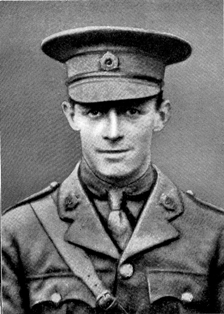
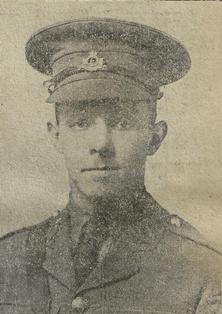 Charles
Baker was born around 1892, the second son of Canon W.W.C. Baker,
formerly the Rector of Dunstable. He was educated at Fettes College
in Edinburgh and New College Oxford, where he was a chorister. Charles
was a Master at St. Ninnians School until mobilised when war broke
out.
Charles
Baker was born around 1892, the second son of Canon W.W.C. Baker,
formerly the Rector of Dunstable. He was educated at Fettes College
in Edinburgh and New College Oxford, where he was a chorister. Charles
was a Master at St. Ninnians School until mobilised when war broke
out. 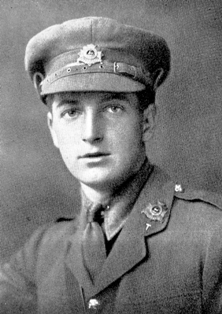
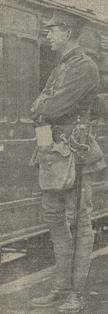 Brian
Cumberland born 11 March 1889, the son of Hugh Cumberland, J.P.,
C.A. (who lived at The Lynchet in Luton at the time of his death).
Brian
Cumberland born 11 March 1889, the son of Hugh Cumberland, J.P.,
C.A. (who lived at The Lynchet in Luton at the time of his death).
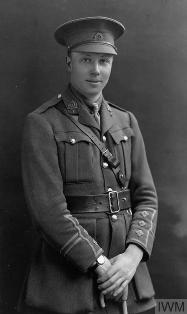 Walter was in Burton-on-Trent and on the 1901 census appears in
Uppingham School. By the 1911 census he was a Maltster living in
Ashburnham Road in Bedford, who was a well known Bedfordshire County
cricketer and the Vice President of the Bedford and District Cricket
League.
Walter was in Burton-on-Trent and on the 1901 census appears in
Uppingham School. By the 1911 census he was a Maltster living in
Ashburnham Road in Bedford, who was a well known Bedfordshire County
cricketer and the Vice President of the Bedford and District Cricket
League. 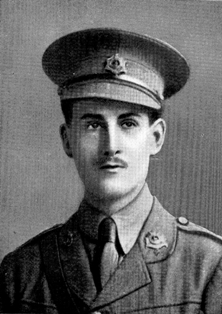 Cyril
Lydekker was from Harpenden and was educated at Haileybury College
before working at the Radlett branch of Barclays Bank. He was described
as having "a quiet but genial disposition".
Cyril
Lydekker was from Harpenden and was educated at Haileybury College
before working at the Radlett branch of Barclays Bank. He was described
as having "a quiet but genial disposition".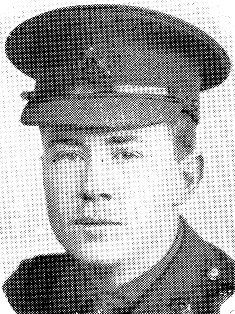 Ralph
Brighten - referred to as 'Dick' in his brother's letters home -
was born at Southend-on-Sea, the son of Captain William Green Brighten
(formerly of the Honourable Artillery Company) and Fanny Elizabeth
Brighten, and the younger brother of the 5th Battalion Commanding
Officer
Ralph
Brighten - referred to as 'Dick' in his brother's letters home -
was born at Southend-on-Sea, the son of Captain William Green Brighten
(formerly of the Honourable Artillery Company) and Fanny Elizabeth
Brighten, and the younger brother of the 5th Battalion Commanding
Officer 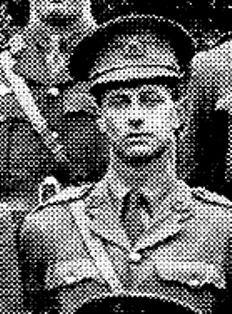 Born
early in 1891, Frederick Rising enlisted as Private 913 in the Public
Schools Battalion of the Middlesex Regiment on 23 September 1914.
At 6 feet 1 inches tall, he was certainly above average for the
time and hailed from Poddington near Wellingborough.
Born
early in 1891, Frederick Rising enlisted as Private 913 in the Public
Schools Battalion of the Middlesex Regiment on 23 September 1914.
At 6 feet 1 inches tall, he was certainly above average for the
time and hailed from Poddington near Wellingborough. 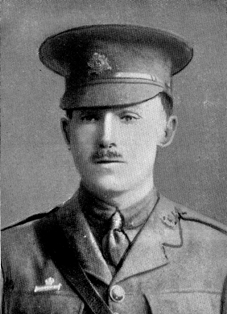 Frank
was born in Luton in 1894, the eldest son of Mr Francis Edward Shoosmith
and Minnie Elizabeth Jane (formerly Gardner), his father being a
prominent local Straw Hat manufacturer in Luton. He was educated
at St Gregory's, Luton, Eastbourne, Margate and L'Ecole de Commerce
at Neuchatel. Once his education was complete, he joined Vyse, Sons
and Co. Ltd, a year later moving to his father's business in Upper
George Street, Luton. By this time he was already a popular member
of the South Beds Golf Club, his family living at St Kilda, Hart
Hill in Luton.
Frank
was born in Luton in 1894, the eldest son of Mr Francis Edward Shoosmith
and Minnie Elizabeth Jane (formerly Gardner), his father being a
prominent local Straw Hat manufacturer in Luton. He was educated
at St Gregory's, Luton, Eastbourne, Margate and L'Ecole de Commerce
at Neuchatel. Once his education was complete, he joined Vyse, Sons
and Co. Ltd, a year later moving to his father's business in Upper
George Street, Luton. By this time he was already a popular member
of the South Beds Golf Club, his family living at St Kilda, Hart
Hill in Luton. 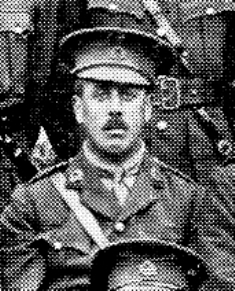 Rudolph
was born on the 15th June 1885 in Caxton, Cambridgeshire. His parents
were Henry Meade Smythe (the Vicar of Caxton), who died before 20th
March 1902 and Fanny Catherine Smythe (nee Pritchard). They had
married on the 1st May 1884 at Portsea in Hampshire.
Rudolph
was born on the 15th June 1885 in Caxton, Cambridgeshire. His parents
were Henry Meade Smythe (the Vicar of Caxton), who died before 20th
March 1902 and Fanny Catherine Smythe (nee Pritchard). They had
married on the 1st May 1884 at Portsea in Hampshire. 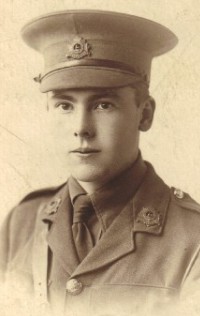
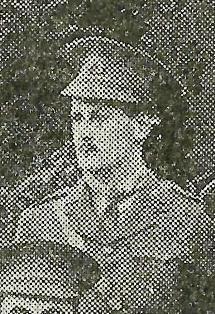
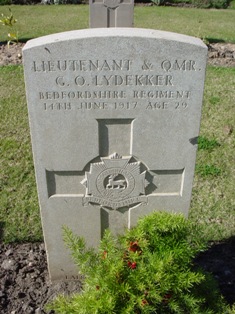 Gerard
was born in Harpenden, Hertfordshire, the son of Richard Lydekker
F.R.S. and Lucy Marianne Lydekker (nee Davys). He was educated at
Haileybury College where he served in their Cadet Corps and became
a Mining Engineer before war broke out in 1914.
Gerard
was born in Harpenden, Hertfordshire, the son of Richard Lydekker
F.R.S. and Lucy Marianne Lydekker (nee Davys). He was educated at
Haileybury College where he served in their Cadet Corps and became
a Mining Engineer before war broke out in 1914. 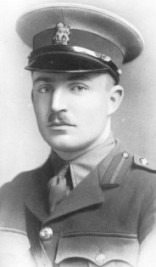
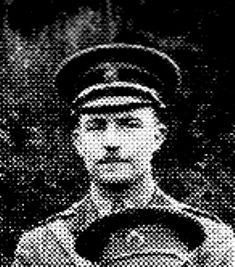
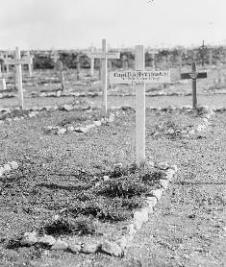
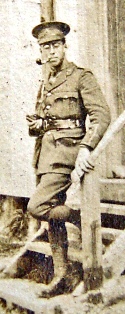
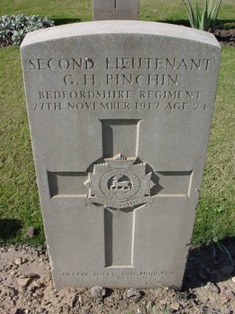 George
was born on the 20th September 1893, the son of George Staples and
Gertrude Elizabeth Pinchin of "Lynton" in Sevenoaks.
George
was born on the 20th September 1893, the son of George Staples and
Gertrude Elizabeth Pinchin of "Lynton" in Sevenoaks.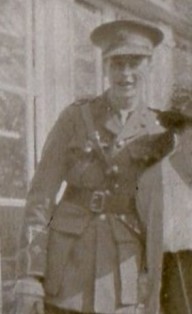
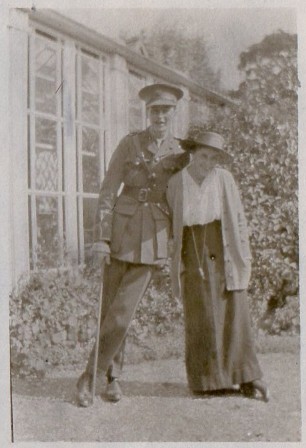
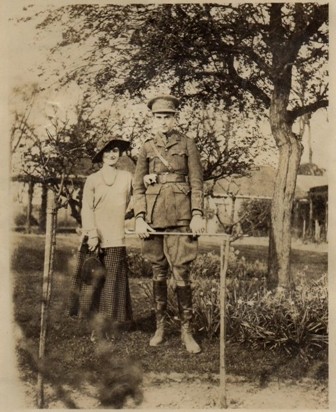
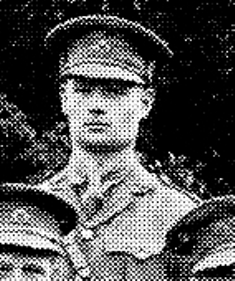 John
Yarde was the Head Boy at Bedford School, the Captain of Boats and
rowed for Christ's College, Cambridge before war broke out. After
the war his intention was to join the church - a vocation he sadly
never got to fulfil.
John
Yarde was the Head Boy at Bedford School, the Captain of Boats and
rowed for Christ's College, Cambridge before war broke out. After
the war his intention was to join the church - a vocation he sadly
never got to fulfil. 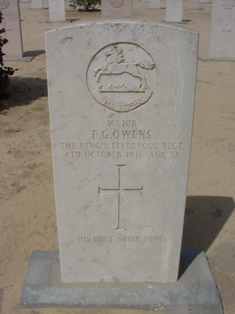 Major
Frederick Owens arrived with the 5th Battalion on Christmas Eve
1917, from the 9th Battalion of the Liverpool Regiment.
Major
Frederick Owens arrived with the 5th Battalion on Christmas Eve
1917, from the 9th Battalion of the Liverpool Regiment. 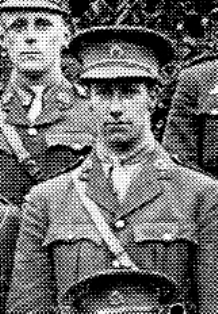 Hugh
was born on the 16th March 1891 at 13 Gledhow Gardens in Brompton,
London, the son of Coventry Archer and Frances Emily Woodhouse (nee
Hensley). Before war broke out he was educated at Malvern College
and became a "Produce Broker", employed by his father.
Hugh
was born on the 16th March 1891 at 13 Gledhow Gardens in Brompton,
London, the son of Coventry Archer and Frances Emily Woodhouse (nee
Hensley). Before war broke out he was educated at Malvern College
and became a "Produce Broker", employed by his father.